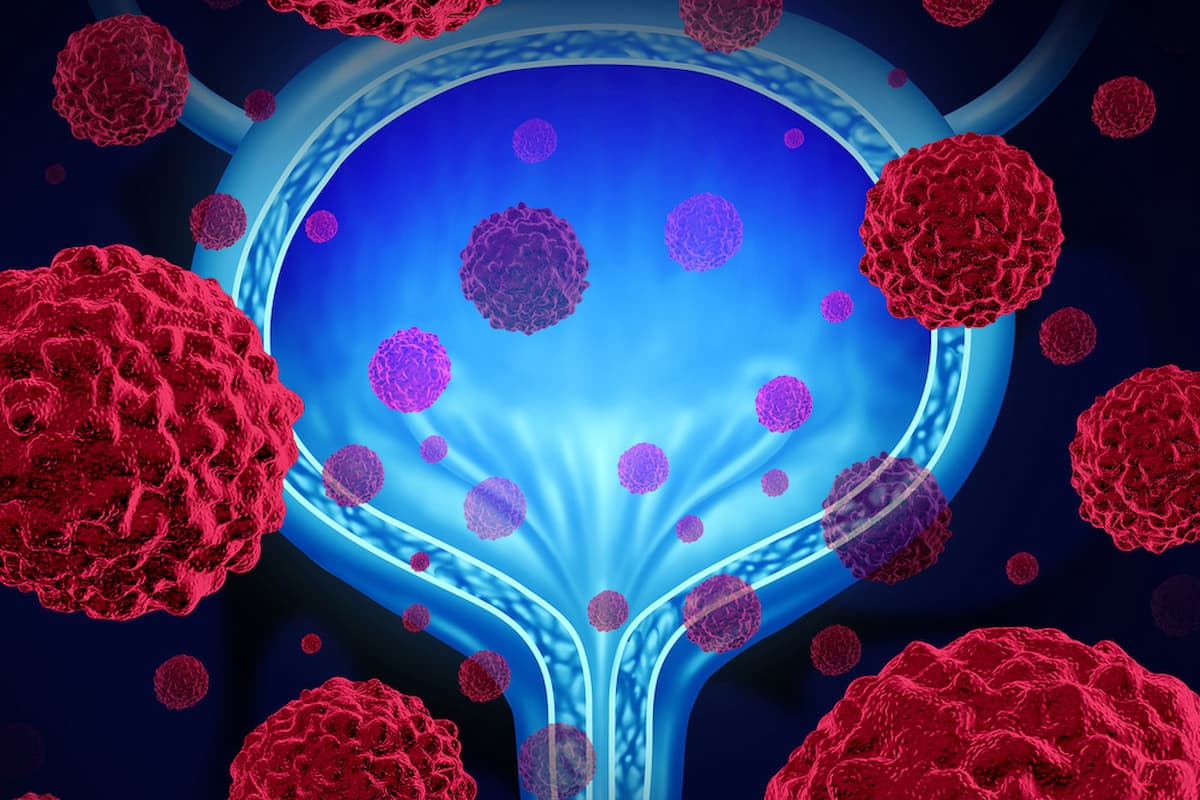Sasanlimab Plus BCG Boosts Event-Free Survival in High-Risk NMIBC
The overall safety profile of the combination therapy was consistent with the known profile of BCG and data reported from clinical trials with sasanlimab.

Sasanlimab, an investigational anti–PD-1 monoclonal antibody, in combination with Bacillus Calmette-Guérin (BCG) met the primary end point of event-free survival (EFS) when assessed as an induction therapy with or without maintenance therapy in patients with BCG-naïve, high-risk non-muscle invasive bladder cancer (NMIBC), according to a news release on data from the phase 3 CREST trial (NCT04165317).1
The combination therapy produced a statistically significant and clinically meaningful EFS improvement vs BCG alone. Additionally, the overall safety profile of sasanlimab plus BCG was consistent with the known profile of BCG and data reported from clinical trials with sasanlimab.
Further results from the CREST trial evaluating the efficacy and safety of the sasanlimab combination therapy vs BCG monotherapy in patients with BCG-naïve high-risk NMIBC is set to be submitted for presentation at an upcoming medical congress.
“Patients with BCG-naïve high-risk [NMIBC] have high rates of recurrence and progression,” Neal Shore, MD, FACS, medical director for the Carolina Urologic Research Center, and lead investigator for the CREST trial, said in the news release.1 “These study results demonstrate the potential for sasanlimab in combination with BCG to redefine the treatment paradigm for patients living with BCG-naïve, high-risk [NMIBC], including patients with carcinoma in-situ [CIS], providing prolonged [EFS that] may delay or reduce the need for more aggressive treatment options.”
According to an article published in Future Oncology, the trial randomly assigned patients with histologically confirmed BCG-naïve high-risk NMIBC 1:1:1 to receive either sasanlimab plus BCG with maintenance therapy, sasanlimab plus BCG without maintenance therapy, or BCG monotherapy.2 The target sample size was set to approximately 1000 patients, determined through comprehensive power analysis to ensure a sufficiently powered study to test the superiority of the combinations to BCG alone.
During the induction period, 1 dose of BCG was administered weekly via intravesical installation for 6 weeks. Following the initial induction period, patients with CIS who have persistent disease, as well as patients with high-grade Ta disease recurrence, were eligible to receive re-induction with BCG for an additional 6 weeks. Sasanlimab was administered via subcutaneous injection when used as a combination treatment with BCG.
Dosing may be skipped with either agent or delayed with BCG in the event of significant toxicity. Additionally, dose reductions were not permitted on the trial.
Disease status was assessed by cystoscopy and urine cytology, with biopsy and imaging used in the event of malignant or suspicious cells. Additionally, safety was assessed throughout the study, with all patients participating in safety follow-up visits following treatment, occurring 30, 60, and 90 days after treatment.
The trial’s primary end point was EFS. The secondary end points included overall survival, complete responses (CRs) in patients with CIS at baseline, duration of CR for patients with CIS at baseline, time to recurrence, time to cystectomy, and safety.
Key inclusion criteria for trial participation included patients 18 years or older (20 years or older in Japan) with histologically confirmed high-risk NMI transitional cell carcinoma (TCC) of the bladder urothelium. Additionally, patients were included if they had undergone a complete resection of all Ta/T1 papillary disease, with the most recent transurethral resection of bladder tumor occurring 12 or fewer weeks prior to randomization.
Key exclusion criteria included any evidence of muscle-invasive, locally advanced, or metastatic urothelial cancer or concurrent extravesical, NMI TCC of the bladder urothelium, and those who underwent intravesical BCG treatment at 2 or fewer years prior to randomization. However, prior intravesical chemotherapy was permitted for patients seeking trial eligibility.
References
- Pfizer’s sasanlimab in combination with BCG improves event-free survival in patients with BCG-naïve, high-risk non-muscle invasive bladder cancer. News release. Pfizer Inc. January 10, 2025. Accessed January 14, 2025. https://tinyurl.com/22dbnz8h
- Steinberg GD, Shore ND, Redorta JP, et al. CREST: phase III study of sasanlimab and Bacillus Calmette-Guérin for patients with Bacillus Calmette-Guérin-naïve high-risk non-muscle-invasive bladder cancer. Future Oncol. 2024;20(14):891-901. doi:10.2217/fon-2023-0271